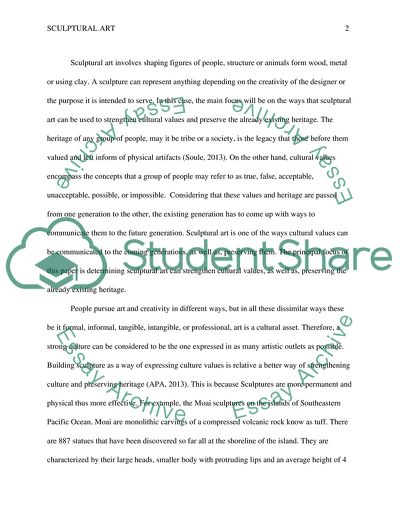Cite this document
(Strengthening Cultural Values and Preserving Heritage through Sculptur Report, n.d.)
Strengthening Cultural Values and Preserving Heritage through Sculptur Report. https://studentshare.org/visual-arts-film-studies/1820889-how-can-sculptural-art-strengthen-cultural-values-and-preserve-existing-heritage
Strengthening Cultural Values and Preserving Heritage through Sculptur Report. https://studentshare.org/visual-arts-film-studies/1820889-how-can-sculptural-art-strengthen-cultural-values-and-preserve-existing-heritage
(Strengthening Cultural Values and Preserving Heritage through Sculptur Report)
Strengthening Cultural Values and Preserving Heritage through Sculptur Report. https://studentshare.org/visual-arts-film-studies/1820889-how-can-sculptural-art-strengthen-cultural-values-and-preserve-existing-heritage.
Strengthening Cultural Values and Preserving Heritage through Sculptur Report. https://studentshare.org/visual-arts-film-studies/1820889-how-can-sculptural-art-strengthen-cultural-values-and-preserve-existing-heritage.
“Strengthening Cultural Values and Preserving Heritage through Sculptur Report”. https://studentshare.org/visual-arts-film-studies/1820889-how-can-sculptural-art-strengthen-cultural-values-and-preserve-existing-heritage.


